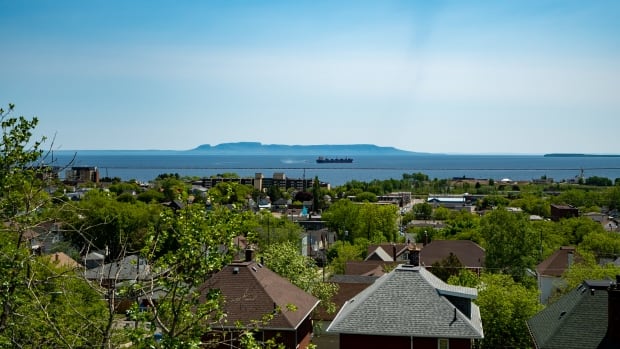As Canadian urbanites search for extra inexpensive housing, officers in Thunder Bay are pitching the northwestern Ontario neighborhood as one of many final cities in Canada with low cost houses on the market.
The Thunder Bay Neighborhood Financial Improvement Fee (CEDC) has resurrected an advert marketing campaign aimed toward distant employees in city facilities on the lookout for a decrease price of residing.
Jamie Taylor, CEO of CEDC, mentioned they revived the marketing campaign after a Royal LePage research topped Thunder Bay essentially the most inexpensive metropolis in Canada primarily based on mixture residence value information and median family incomes from the 2022 Census report.
“We thought it was an important alternative for us to revive that marketing campaign and sort of capitalize on the great press that we’re getting in the neighborhood to have the ability to hopefully entice a couple of extra individuals right here,” mentioned Taylor.
CEDC is concentrating on main metropolitan areas like Toronto, Vancouver and Edmonton, she mentioned.
“It is actually about people which might be sort of extra cellular and unattached that may simply decide up their job and do it from wherever,” Taylor mentioned.
Whereas single individuals with out vital ties to massive cities are the primary goal, they’re additionally hoping to draw younger households or individuals serious about working in Thunder Bay itself.
Canada’s most inexpensive metropolis?
Thunder Bay’s mixture residence value was slightly below $300,000 as of the primary quarter of this yr, mentioned the Royal LePage report.
Whereas buying a house could also be considerably cheaper in Thunder Bay, the financial savings on hire are much less drastic. The median hire in Thunder Bay is $1,200, based on 2023 Canada Mortgage and Housing Company (CMHC) hire value information. This ranks it twenty seventh out of 58 census metropolitan areas in Ontario CMHC had information on. It is nonetheless lower than the provincial median or median hire in Toronto, which had been $1,500 and $1,750 respectively.
As Canada experiences a surge in inhabitants, even areas which have been traditionally extra sparsely populated are seeing progress. Northwestern Ontario is not experiencing as excessive a progress fee as Northeastern Ontario or nationwide, however it’s nonetheless rising, mentioned Lakehead economist Livio Di Matteo
“In case you have a look at the northwest – Kenora, for instance, is not rising in a short time, and Thunder Bay is rising sooner than Kenora, however not as quick as say, the South, or North Bay or Larger Sudbury,” he mentioned.
Thunder Bay’s inhabitants grew by simply over 2,400 since 2019, with nearly all of the expansion taking place final yr. The inhabitants surpassed 130,000 in 2023.
Infrastructure progress must comply with inhabitants progress, economist says
Di Matteo mentioned this inhabitants progress is sweet information – so long as infrastructure grows with it to fulfill calls for.
This might be a problem for rural and northern cities like Thunder Bay, he mentioned.
“They’re normally accustomed to worrying about job losses and the economic system shrinking,” he mentioned. “But when migration flows proceed at this stage, they will principally should turn into considerably extra growth-oriented,” Di Matteo mentioned.
“A part of the difficulty with migration in Canada over the previous few years is that it was a scenario the place it was simply assumed every thing would fall into place,” he mentioned.
Work is underway on the intersection of Cumberland Road and Crimson River Highway in Thunder Bay. An economist at Lakehead College says infrastructure progress is required to serve a rising inhabitants. (Marc Doucette/CBC)
Like many locations in Canada, northern Ontario is dealing with a well-documented scarcity of housing and employees in a number of industries, together with healthcare, schooling, aviation and expert trades.
Thunder Bay’s distance from different cities may be a tough promote to urbanites on the lookout for greener pastures. The closest massive metropolis is Minneapolis, which is 552 kilometres away, and in the USA. Winnipeg is the closest Canadian city centre at 700 kilometres away.
Toronto is 1,400 kilometres away, that means it takes both a flight or a sixteen-hour drive to get there.
Taylor mentioned that whereas the drive to Thunder Bay is lengthy, the airport entry makes up the distinction, and hopes that the positives town has to supply can carry new employees in.
“We do have nice connectivity,” she mentioned. “Sure, it’s far by automotive to get to Toronto, but it surely’s a two hour flight, proper? And there is a number of flights every day. You may get out and in of Thunder Bay very simply.”








